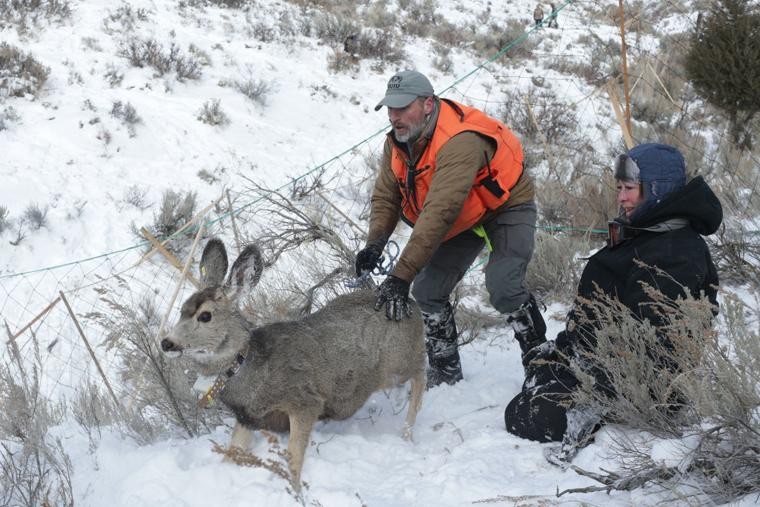The lingering snowpack during March and April took its toll on Eastern Idaho mule deer with below-average survival rates of fawns.
“The mule deer fawns, in particular, took a pretty big hit,” said James Brower, Idaho Department of Fish and Game regional communications manager. “In some places, up to 40 and 50 percent were lost. There’s probably some loss from some predation stuff, but it’s mainly due to the prolonged winter. We just had a winter with a lot of snow in February with record snowfalls especially in the Palisades zone.”
Despite the grim news, numbers are still better than the tough winter of 2016-2017. While mule deer fawns were hit hard, elk calves fared better, with Fish and Game reporting that about 77 percent of collared calves have survived.
“It will not be like the winter of 2016-17, but we will be below the long-term average,” said Daryl Meints, Fish and Game’s deer and elk coordinator. “On a brighter note, it appears that elk calf survival is doing just fine, as are adult doe and cow survival.”
Fish and Game biologists have been monitoring 207 mule deer fawns and 201 elk calves statewide that were captured in early winter and fitted with telemetry collars.
“Every time a collar becomes inactive, which means the deer hasn’t moved for a long time, it sends us a signal,” Brower said. “We have technicians that check that daily, and they go out and determine the cause of death. They check for starvation or predation. There are days when they spend all day hiking in the snow.”
Brower said the biologists try to get to collars within 24 hours of a signal going off.
“They have no idea what their schedule is going to be like from day to day,” he said. “They just know that they are going to check the signals and go track down collars.”
They are often particularly busy during March and April.
“March and April is when most of the fawns will succumb to the rigors of winter,” Brower said.
Technicians will continue monitoring collars until the end of May and expect to add to the numbers of fawn mortality.
“Wildlife managers expect that 2018-19 mule deer fawn survival will end up being higher than 2016-17, which was the second-lowest survival of fawns (30 percent) in 20 years,” said Brian Pearson, Fish and Game information specialist, in a news release.
Adult deer and elk typically survive winter at higher rates than fawns and calves unless it is an extreme winter, Pearson reported.
Of the 548 radio-collared mule deer does being monitored across the state, 92 percent were alive through April 30, and 98 percent of the 643 collared elk cows survived. Biologists will report a final tally in June.
As snow melts and temperatures ease, most deer and elk will head back into the high country following the green-up.
“Where the snow has melted and the green up is pretty lush and full of nutrients, they’ll follow that and start moving back to their summer ranges,” Brower said.



